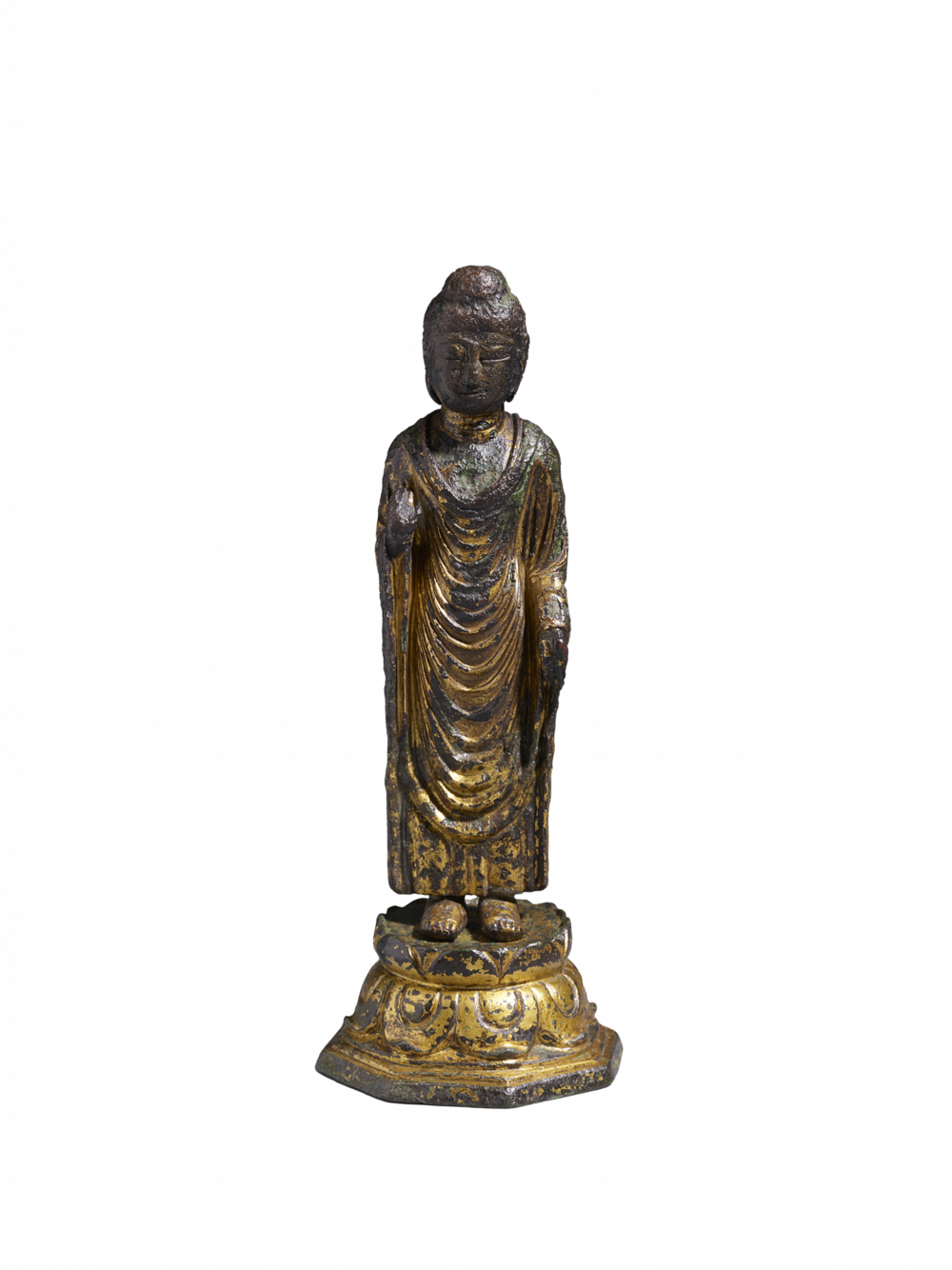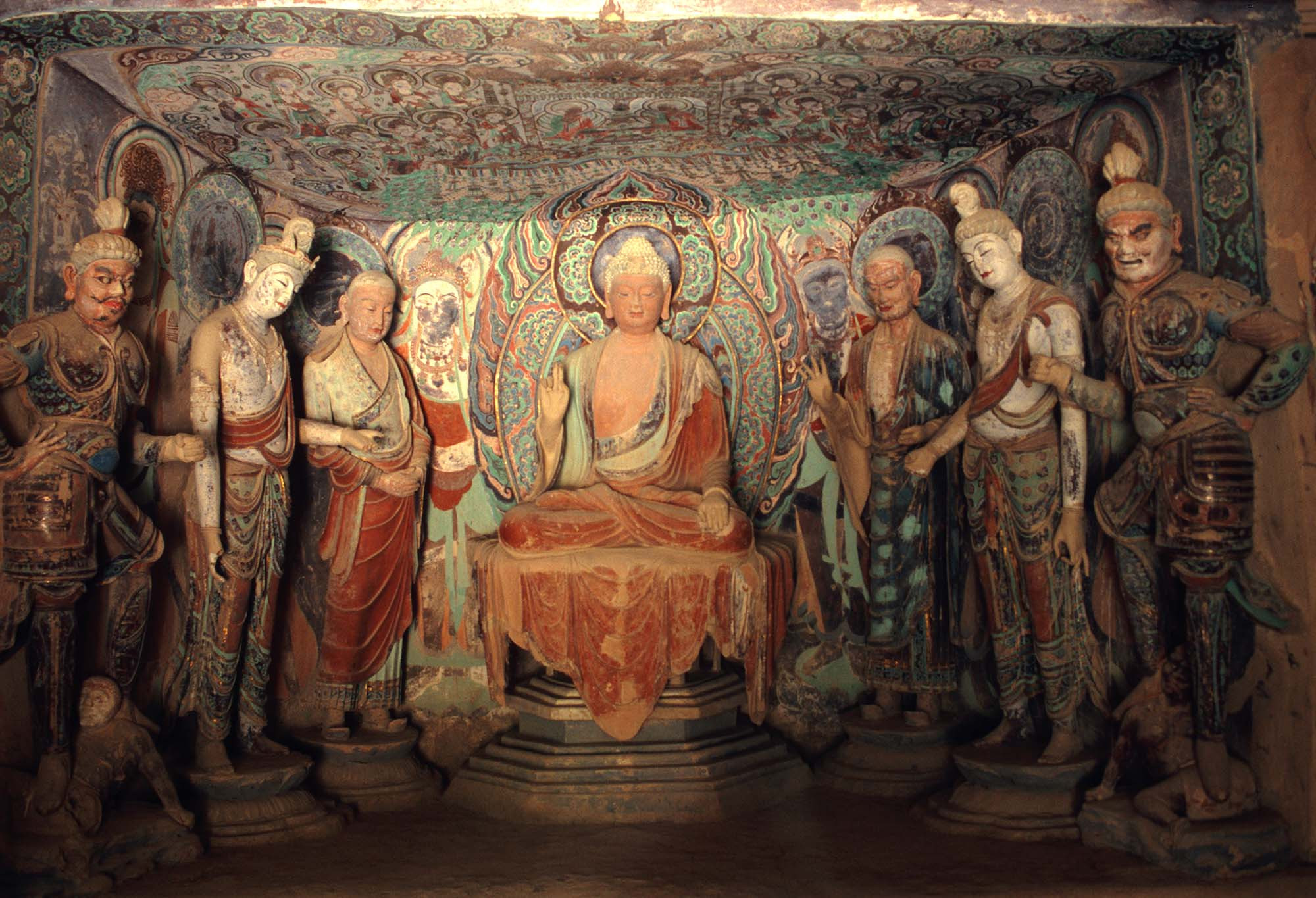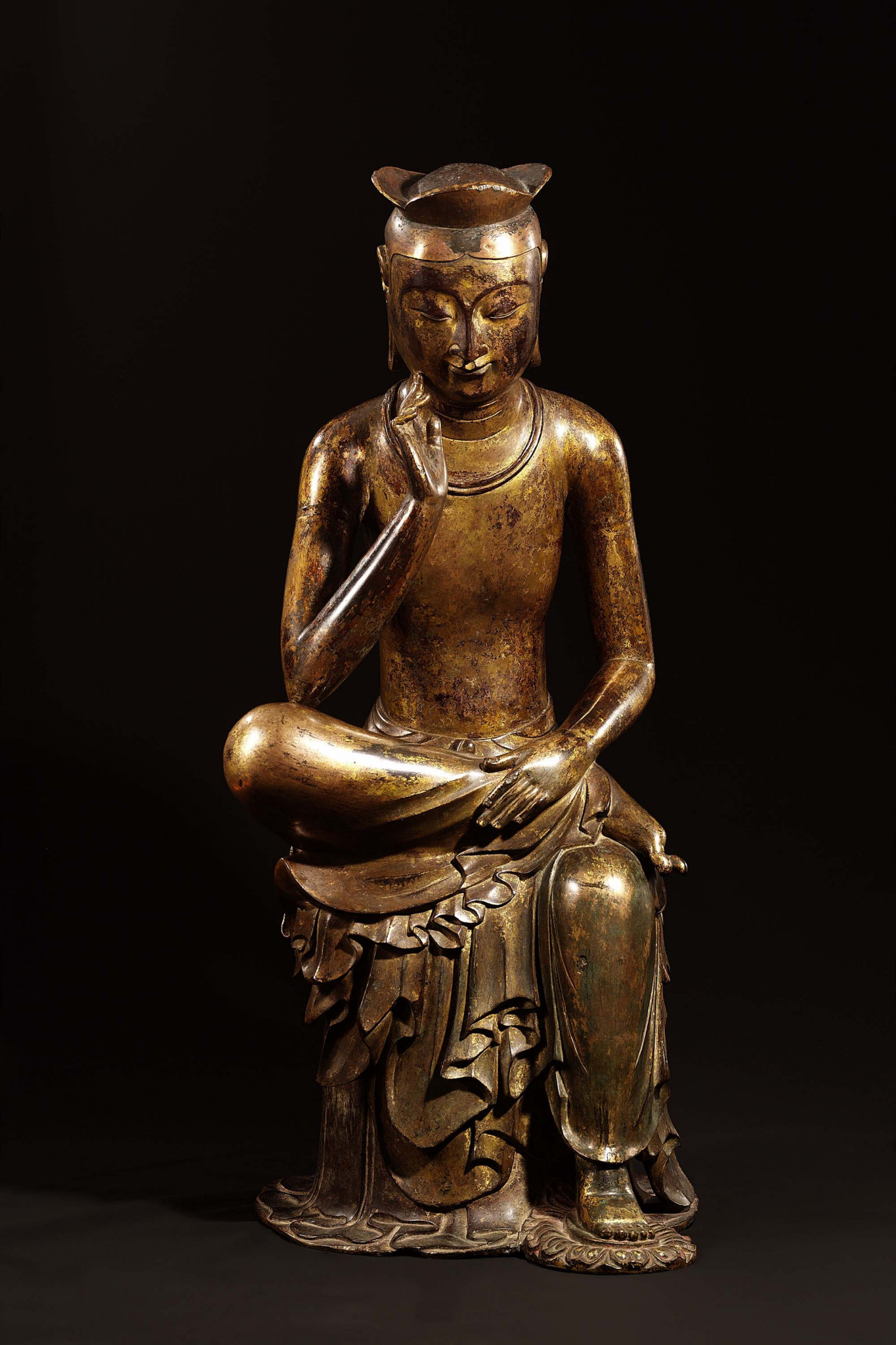From its source in northern India, Buddhism spread eastwards along the Silk Roads to reach China, Korea, Japan, and finally Tibet.
Learn about the rise and fall of the Buddhist teachings in Central and East Asia.

From its source in northern India, Buddhism spread eastwards along the Silk Roads to reach China, Korea, Japan, and finally Tibet.
Learn about the rise and fall of the Buddhist teachings in Central and East Asia.
Discover the vibrant artistic work along the Silk Roads.

The Mogao Caves near Dunhuang in north-west China achieved fame thanks to a sensational find.
In the north wall of cave 16, a monk in 1900 discovered a closed space containing tens of thousands of Buddhist manuscripts. Dating from the 4th to the 11th century, they had been sealed inside the space presumably in early in the 11th century to protect them from approaching invaders.
Many items from the so-called “Library Cave” reached Europe with explorers such as Aurel Stein (1862–1943) and Paul Pelliot (1878–1945) early in the 20th century.
Discover how, between the 3rd and 6th centuries, Buddhist teachings spread across China and Korea to reach Japan.

Objects reveal that Buddhism not only spread ideas and beliefs; artworks, artistic techniques, and stylistic characteristics also moved with it along the Silk Roads.
This seated bodhisattva is an example. Crafted in Korea early in the 7th century, it has a characteristic lotus crown. A very similar figure, but executed in wood, is known from the Koryu-ji Temple in Japan.
The question of whether the Koryu-ji statue was a gift from Korea or whether it was the work of Korean craftsmen living in Japan remains to be answered. The bodhisattva certainly offers clear evidence of artistic exchange between the two regions.
Follow the flow of new Buddhist ideas and beliefs as far as Japan.
A monk once said to Zhaozhou: I have just arrived at the monastery. Please instruct me, Master.
Zhaozhou asked him: Have you already eaten breakfast?
The monk replied: Yes, I have.
Zhaozhou said: Then go and wash your bowl.